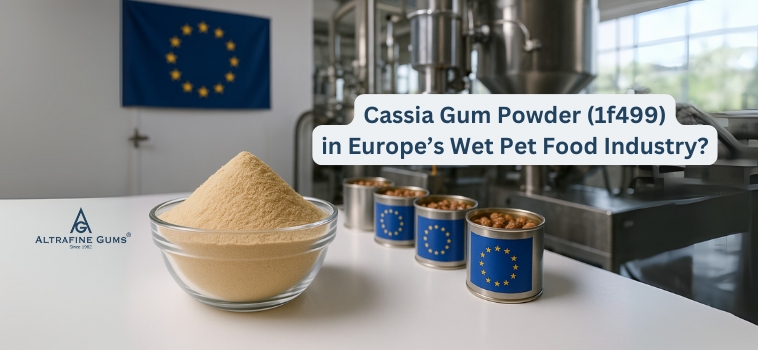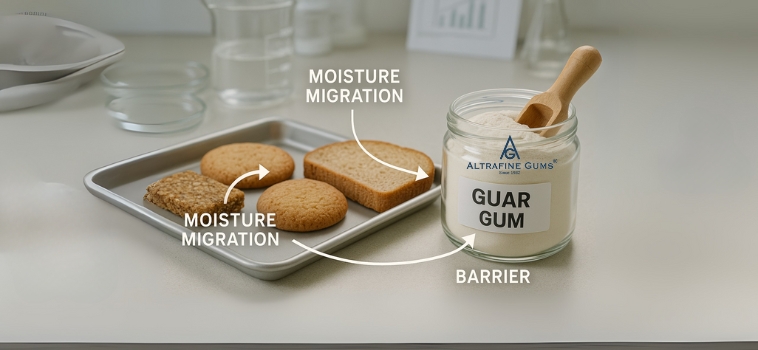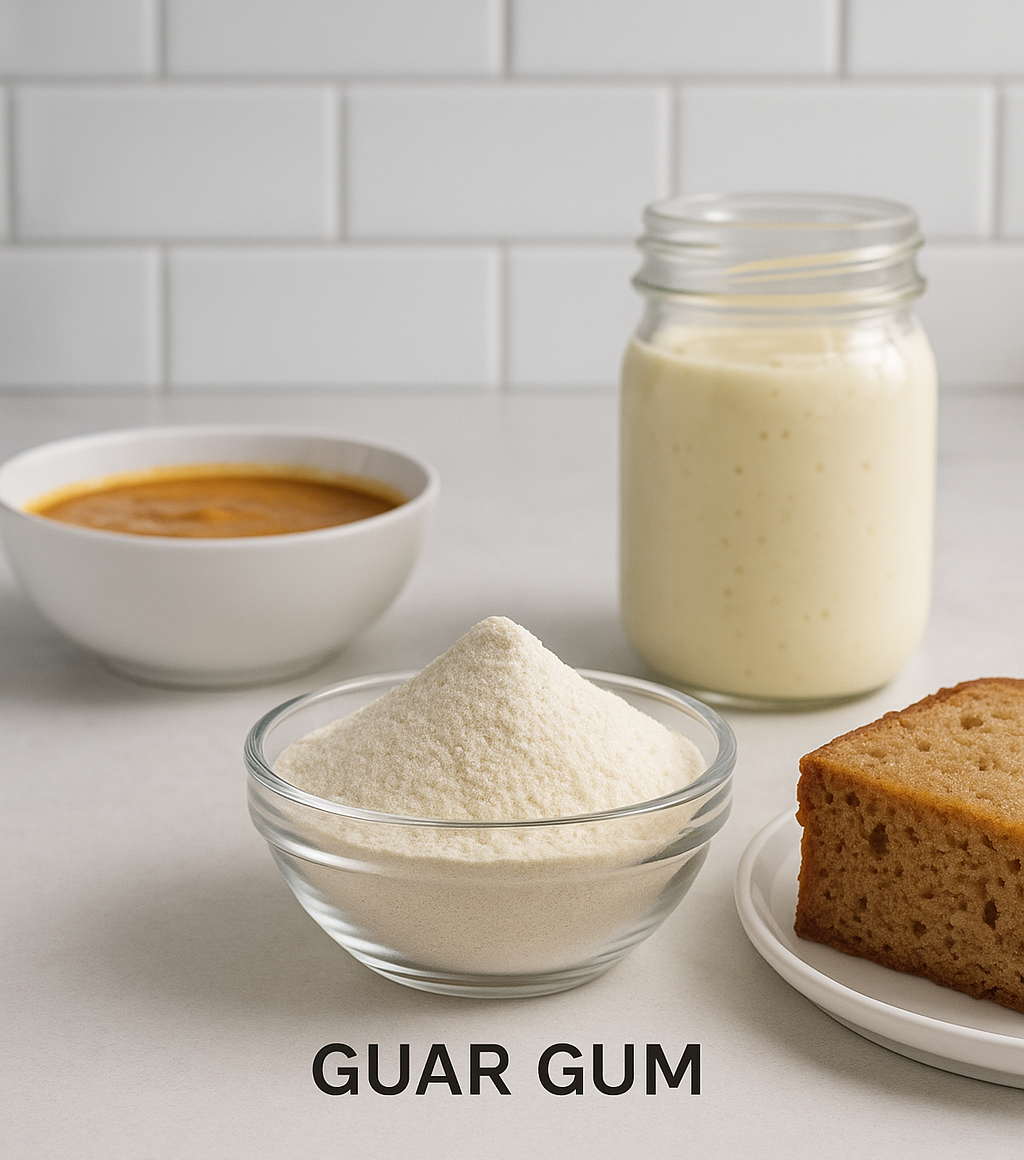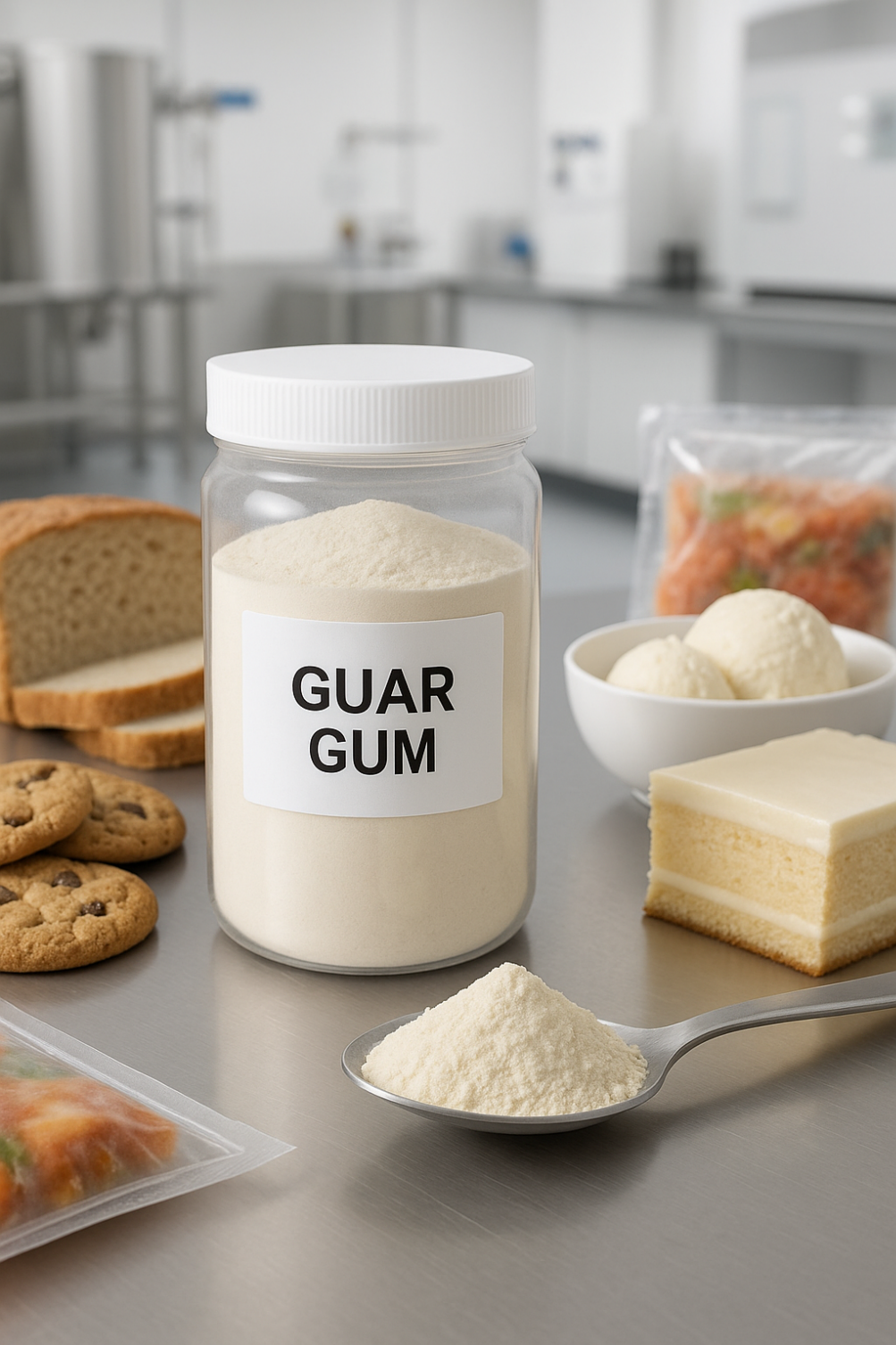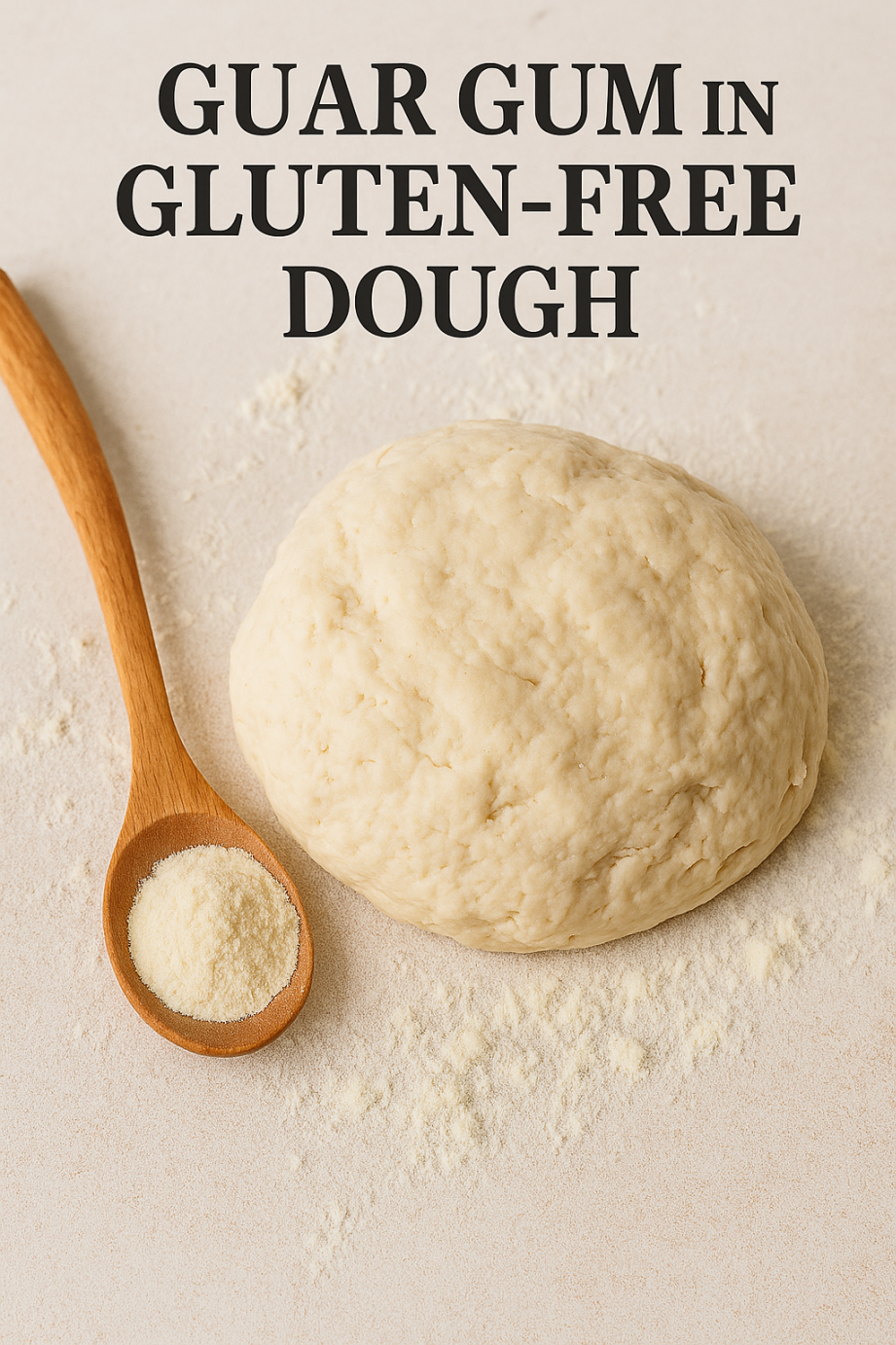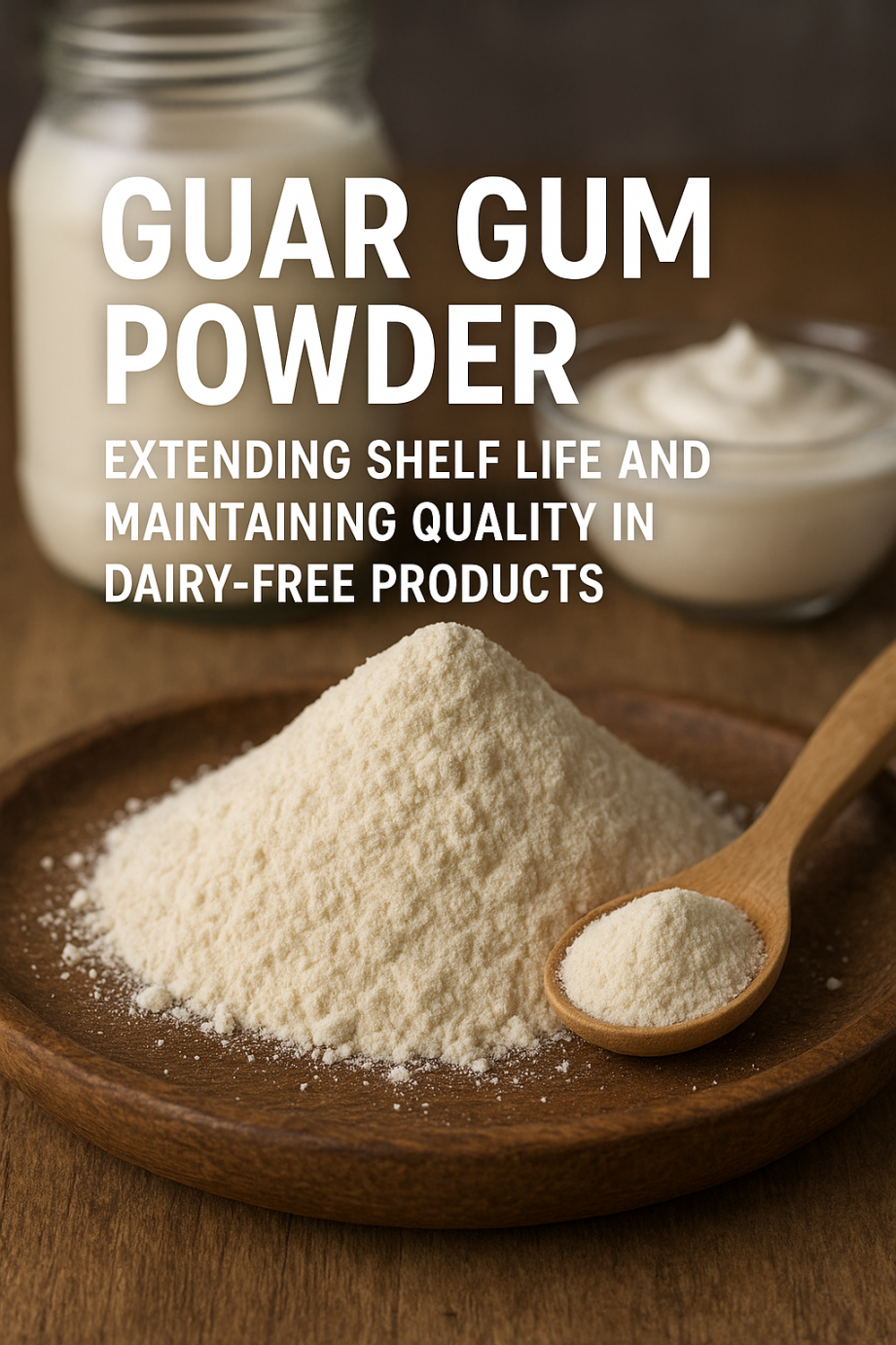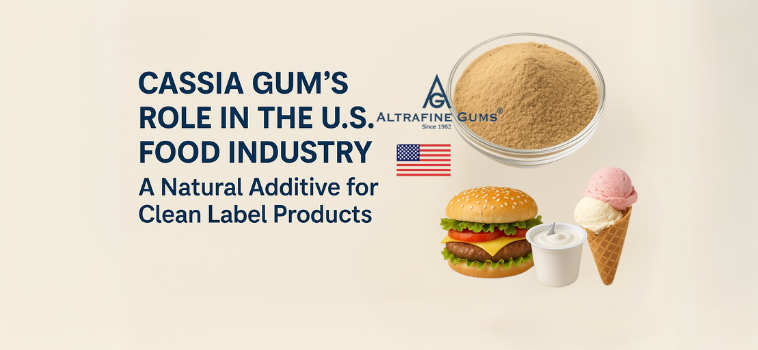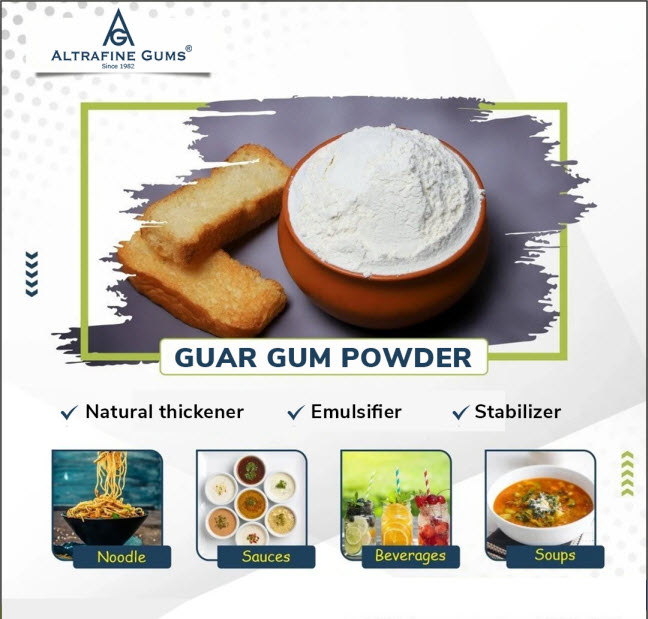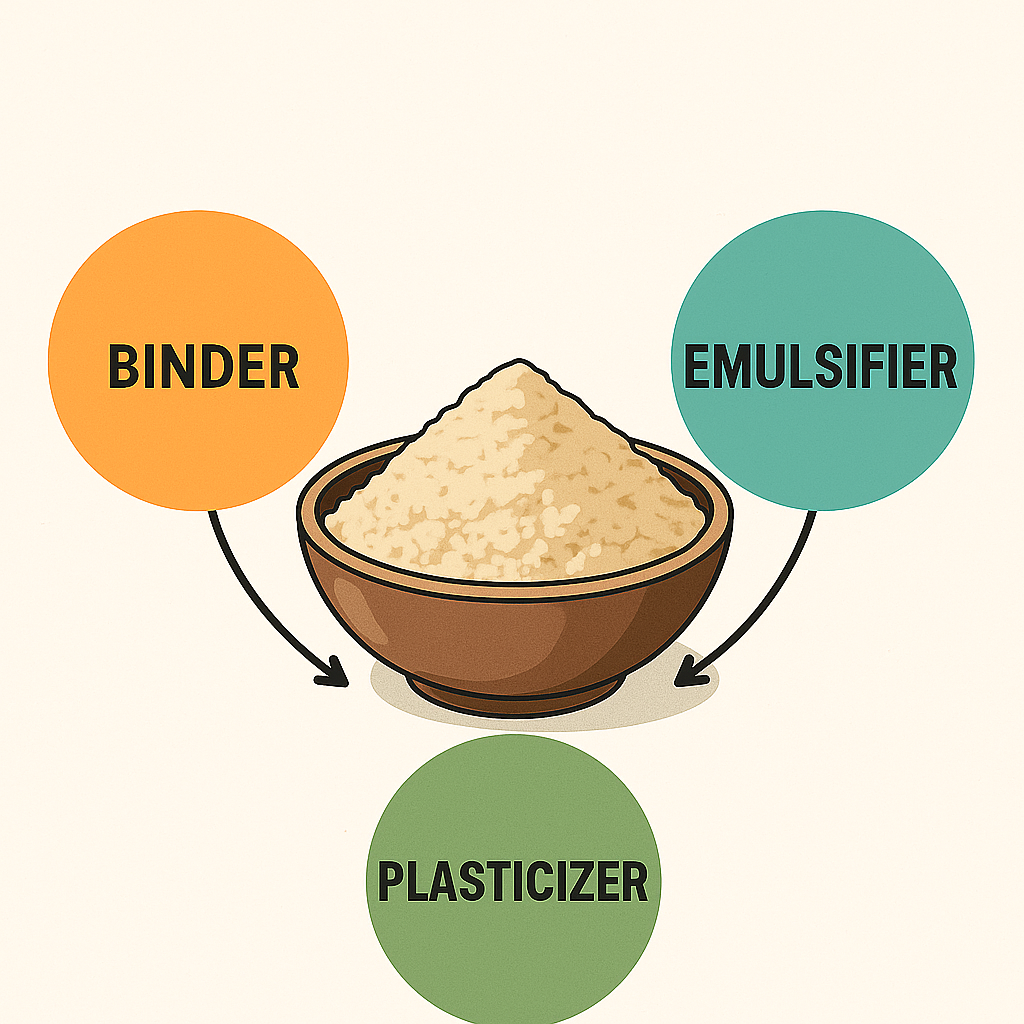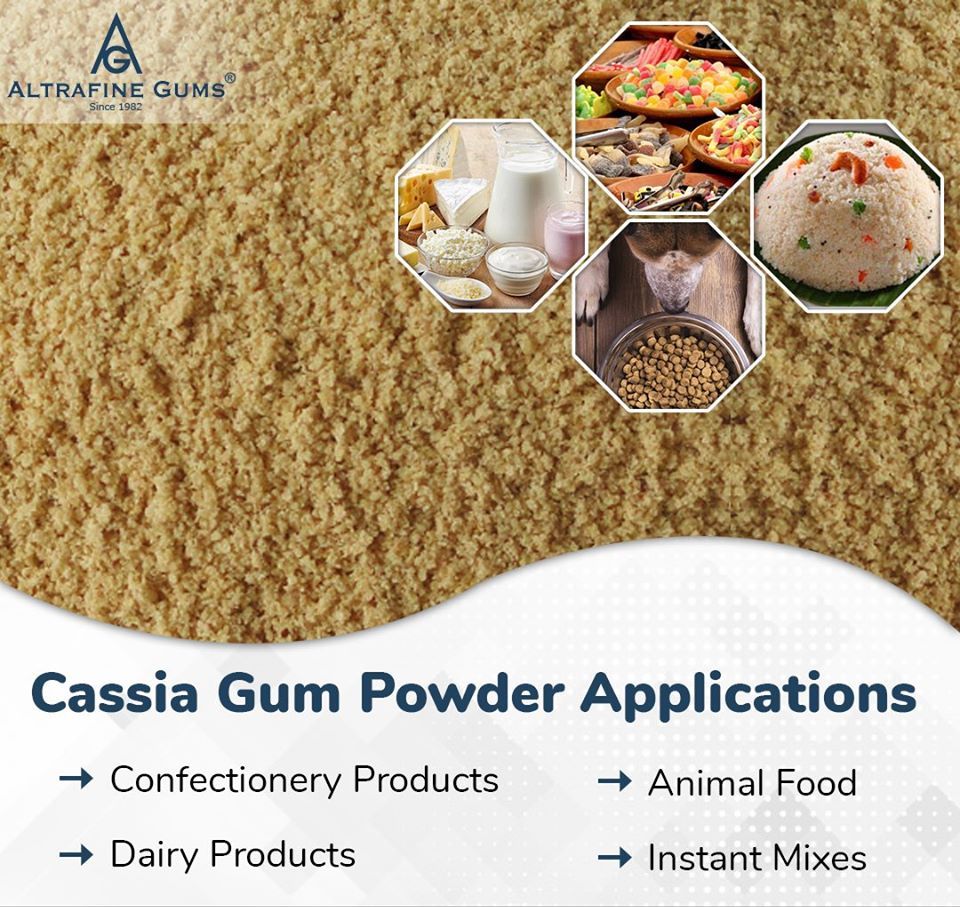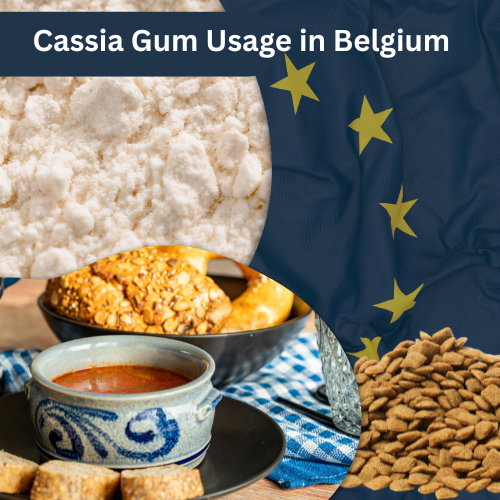Cassia Gum Powder (1f499), derived from the seeds of the Cassia tora plant, is gaining increasing attention in the European pet food industry. Known for its thickening, gelling and stabilizing properties, this natural ingredient is especially valuable in wet pet food formulations. As the pet food industry in Europe continues to prioritize high-quality and safe ingredients, the inclusion of food-grade Cassia Gum has become a preferred option.
Cassia Tora Gum is commonly used in various industries, but its application in the pet food sector has particularly grown due to its ability to enhance texture, stabilize formulations and contribute to smoother textures. Approved for use in Europe, Cassia Gum Powder (1f499) meets stringent safety regulations, ensuring that pet food manufacturers can safely use it in their products.
How Does Cassia Gum Powder Enhance Wet Pet Food Formulations?
Cassia Gum Powder plays a crucial role in improving the overall quality of wet pet food by providing essential thickening, gelling and stabilizing properties. Let’s explore how it contributes to better product formulations.
Thickening and Gelling Properties
Cassia Gum Powder is a versatile ingredient for thickening and gelling wet pet food. Its ability to create a desirable, thick texture helps prevent products from becoming too runny or watery, which can affect the food’s appeal to both pets and pet owners. The Cassia Gum Powder benefits in wet food formulations are most noticeable when it helps create a gel-like consistency, simulating the natural textures of meat-based products. This not only improves the look and feel of the food but also enhances its palatability.
Stabilizing Properties
In addition to thickening and gelling, Cassia Gum in pet food acts as a stabilizer, ensuring that the formulation remains uniform and doesn’t separate over time. Wet pet food, being high in moisture content, can often face issues with ingredient separation. Cassia Gum Powder binds water molecules effectively, maintaining a stable mixture that doesn’t break down during storage or use. This contributes to longer shelf life and overall better product quality.
Why is Cassia Gum Powder Safe and Approved for Use in Pet Foods in Europe?
As an ingredient in pet food, Cassia Gum Powder undergoes rigorous testing and regulatory processes to ensure it meets safety standards. The European Union has specific guidelines in place for substances used in pet food and Cassia Gum Powder complies fully with these regulations.
EFSA Approval and Usage Limits
The European Food Safety Authority (EFSA) has evaluated Cassia Gum Powder and granted approval for its use in pet food. With its classification as 1f499, Cassia Gum is considered safe when used within the specified limits. EFSA has set precise guidelines for the maximum concentration of Cassia Gum Powder allowed in pet food products, ensuring its safety for long-term consumption by pets.
Compliance with Pet Food Safety Standards
Not only is Cassia Gum Powder (1f499) approved by EFSA, but it also complies with broader pet food safety standards. The European Pet Food Industry Federation (FEDIAF) requires that ingredients meet high standards of nutritional value and safety and Cassia Gum Powder meets these expectations. Its approval assures pet food manufacturers that it is a safe and effective ingredient to include in their products.
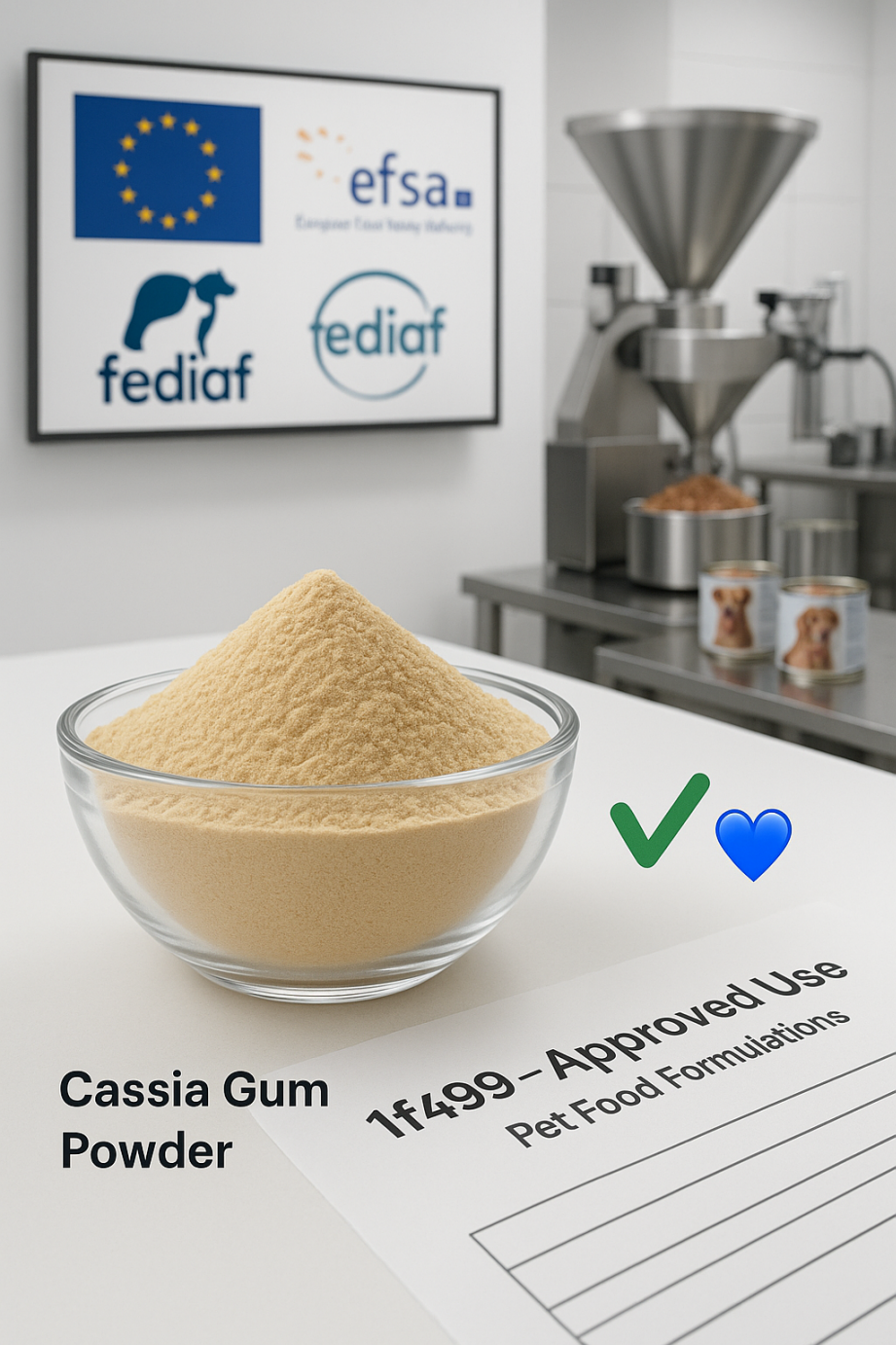
How Does Cassia Gum Powder Interact with Other Hydrocolloids?
In wet pet food formulations, Cassia Gum Powder is often used in combination with other hydrocolloids such as carrageenan and xanthan gum. This combination enhances the overall stability and texture of the pet food, providing a more desirable product.
Synergistic Effects with Carrageenan
Carrageenan, a natural gelling agent, works synergistically with Cassia Powder to improve the gelling and thickening effects in pet food formulations. The combination results in an even more stable gel with better texture, which is particularly important in meat-based pet food products. The synergistic effect ensures that the product maintains its desired texture while also improving the overall stability of the formulation.
Improved Formulation Stability with Xanthan Gum
Xanthan gum, another popular hydrocolloid, is often used in combination with Cassia Gum Powder to improve viscosity and stabilize formulations. When these two ingredients are used together, they enhance each other’s properties, providing a more stable texture. The result is a smoother, more uniform consistency in wet pet food, which helps prevent separation and ensures that the product retains its quality over time.
What Benefits Does Cassia Gum Powder Provide to Pet Food Manufacturers?
Cassia Gum Powder (1f499) provides a wide range of advantages to pet food manufacturers, making it a valuable addition to wet pet food formulations.
Clean Label Appeal and Natural Origin
Pet food manufacturers today are increasingly responding to consumer demand for clean labels, meaning products with simple and recognizable ingredients. Cassia Gum Powder, being derived from the natural Cassia tora plant, fits this trend perfectly. Its natural origin gives it a clean label appeal that resonates with consumers looking for transparent ingredients in the pet food they purchase. By using food grade Cassia Gum, manufacturers can market their products as containing a natural, plant-based ingredient, which is a strong selling point in the market.
Cost-Effectiveness and Production Efficiency
Another significant benefit of Cassia Gum Powder is its cost-effectiveness. As a multifunctional ingredient, it can serve as a thickener, stabilizer and gelling agent all in one. This reduces the need for multiple other additives, streamlining the production process. In turn, this helps manufacturers reduce costs, making Cassia Gum Powder an attractive option for those looking to optimize their formulations while maintaining high product quality. The Cassia Gum Powder benefits also extend to production efficiency, as its versatile nature can simplify the ingredient sourcing and manufacturing process.
Where is the Growing Demand for Cassia Gum Powder in the European Pet Food Market?
As European consumers become more aware of the ingredients in pet food, there is an increasing demand for high-quality, natural and functional ingredients like Cassia Gum.
Shift Toward Premium, Natural Ingredients
There has been a significant shift in the European pet food market toward premium, natural ingredients. Pet owners are becoming more conscious about the food they give their pets and they prefer pet food products that are free from artificial additives. Cassia Gum Powder fits perfectly into this trend, as it is a natural ingredient that helps improve the texture and consistency of pet food. Its clean label appeal makes it a popular choice among manufacturers aiming to meet consumer preferences for natural, wholesome ingredients.
Consumer Preference for High-Quality Pet Nutrition
The growing focus on high-quality nutrition for pets has driven demand for pet food products that provide better texture, nutritional balance and overall quality. Cassia Powder is increasingly recognized for its ability to enhance the texture of wet pet food, helping manufacturers meet the expectations of pet owners who seek superior pet nutrition. Its versatility and natural origin make it an essential ingredient for those looking to create high-quality pet food products that align with consumer preferences.
Conclusion
Cassia Gum Powder (1f499) plays an important role in the European wet pet food industry, offering functional benefits such as thickening, gelling and stabilizing. As a Food Grade Cassia Gum, it meets all necessary regulatory standards, ensuring both safety and effectiveness in pet food formulations. Its ability to enhance the texture, consistency and overall quality of wet pet food makes it a valuable ingredient in creating high-quality products that meet growing consumer demand for natural ingredients.
By incorporating Cassia Gum Powder into pet food formulations, manufacturers can optimize product texture and stability while also catering to the increasing demand for clean label and premium pet food options. As the European pet food market continues to evolve, Cassia Powder will remain a key ingredient in shaping the future of high-quality wet pet food.
FAQs About Cassia Gum Powder
What is Cassia Gum Powder (1f499)?
Cassia Gum Powder (1f499) is a natural ingredient derived from the seeds of the Cassia tora plant. It is used in wet pet food formulations for its thickening, gelling and stabilizing properties.
Why is Cassia Gum Powder used in wet pet food?
It enhances the texture and consistency of wet pet food by thickening and stabilizing the product, preventing separation and ensuring a smooth, appealing texture.
Is Cassia Gum Powder safe for pet food?
Yes, Cassia Gum Powder has been approved by the European Food Safety Authority (EFSA) for use in pet food and it complies with all safety standards set by the EU.
What are the benefits of using Cassia Gum Powder in pet food?
It provides a clean label option, enhances texture and stability, reduces the need for multiple additives and is a cost-effective ingredient for pet food manufacturers.
How does Cassia Gum Powder interact with other hydrocolloids?
Cassia Gum Powder works synergistically with other hydrocolloids like carrageenan and xanthan gum to improve gelling, thickening and stability in pet food formulations.

CEO, Altrafine Gums
With over Four decades of expertise in the natural gums and hydrocolloids industry, Ajit Patel leads Altrafine Gums, a globally recognized manufacturer and exporter of Guar Gum Powder, Cassia Tora Powder (Cassia Gum Powder) and other Hydrocolloids. Under his visionary leadership, the company has built a strong reputation for quality, innovation, and reliability across the food, feed, pet feed, pharmaceutical, mining, oil drilling and cosmetic sectors.
Altrafine Gums has been serving global industries for decades with a focus on sustainable sourcing, research-driven production, and stringent quality control. Its wide product portfolio includes Guar Gum Powder, Cassia Tora Powder (Cassia Gum Powder) and other plant-based hydrocolloids that serve as key functional ingredients in diverse applications.
Ajit Patel’s commitment to excellence ensures that every product from Altrafine meets international standards of performance and purity. He is passionate about advancing the global reach of Indian hydrocolloids, fostering customer trust, and promoting eco-friendly, science-backed solutions that enhance product formulation and performance worldwide.

